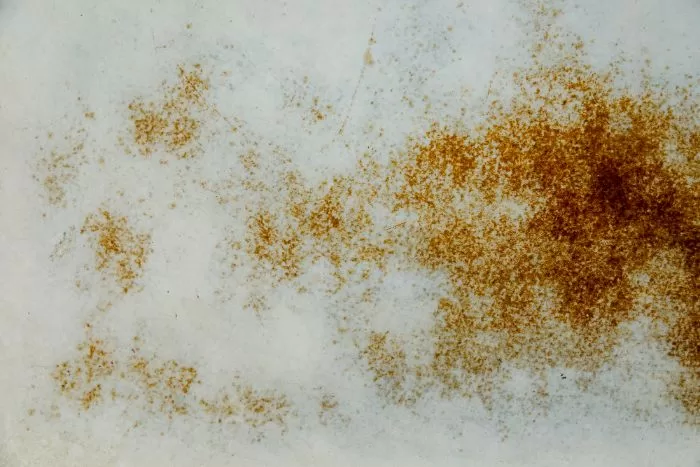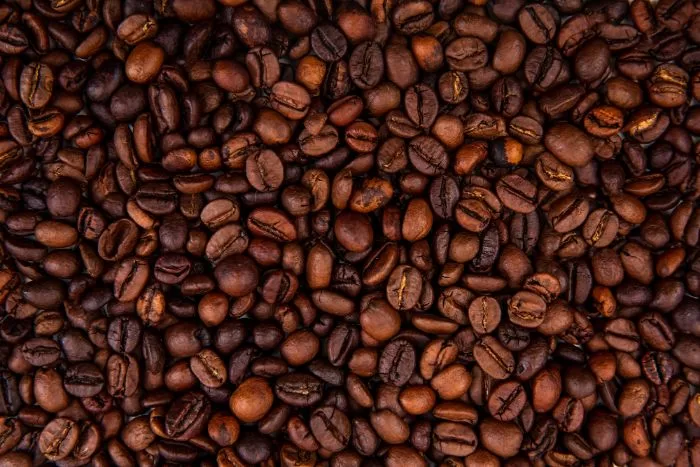Have you ever experienced the sinking feeling of watching your coffee tip over and stain your clothes, carpet, or furniture? Coffee stains are almost a universal mishap, sneaking into our lives despite our best efforts to avoid them. These stubborn marks can turn an ordinary day into a frustrating challenge as we scramble to remove them, often with mixed results.
Recognizing the common mess that coffee spills present, “Erase Your Espresso: The Ultimate Guide to Removing Coffee Stains” aims to turn your despair into victory. This article is your ally, equipped with easy-to-follow, effective solutions to combat those stubborn stains. Whether it’s a fresh spill or an old, set-in mark, our comprehensive guide is designed to provide you with the best strategies to tackle coffee stains head-on. Get ready to restore your items to their former glory and say goodbye to coffee stains for good!
Understanding Coffee Stains
Coffee stains are famously tough to remove, and there’s a good reason for this. When you spill coffee, it’s not just a simple liquid making a mess. It’s a complex brew loaded with different substances. The main culprits behind the stubbornness of coffee stains are compounds called tannins. Tannins are natural substances found in coffee beans that give coffee its rich flavor and color. But when coffee spills, these tannins cling tightly to the fibers of fabrics, the grains of wood, or whatever surface the coffee lands on, creating a stain that can be hard to get out.
The science behind the staining process is quite fascinating.

Once coffee hits a surface, the water in it starts to evaporate. As the water evaporates, it leaves behind all the dissolved solids, like tannins, which are then concentrated in a smaller area. This concentration makes the stain more visible and more difficult to remove. Additionally, if the stain isn’t treated quickly, the tannins can bond more deeply with the material, making the stain even more stubborn. This is why acting fast is key, but understanding this process is the first step towards effectively removing coffee stains from your life.
Act Fast with Pre-Treatment Steps
When a coffee spill happens, quick action is your best friend. Here’s what you need to do right away to prevent a stain from setting in:
1. Don’t Let It Sit:
The moment coffee spills, time is of the essence. The longer it sits, the tougher it will be to remove the stain.
2. Blot, Don’t Rub:
Grab a clean, dry cloth or paper towel and gently press it against the spill.

The goal is to soak up as much coffee as possible. Rubbing can make things worse by spreading the stain or pushing it deeper into the fabric or surface.
3. Cold Water Rinse:
If it’s on clothing or a washable fabric, hold the stained area under cold running water. This helps to flush out a lot of the coffee, reducing the intensity of the stain.
4. Keep it Wet:
Until you can treat the stain properly, keep it moist. Allowing it to dry can set the stain, making your job harder.
Important tips
Understanding the importance of blotting versus rubbing is crucial. Blotting gently absorbs the coffee without spreading it further, whereas rubbing can embed the coffee deeper into the material, setting the stage for a more challenging removal process.
Home Remedies for Coffee Stain Removal
Coffee stains can be troublesome, but your kitchen holds the secret weapons to combat them. Here are two popular home remedies for lifting those stubborn marks:
1. Vinegar Solution:
Combine one portion of white vinegar with two portions of water. This mixture is a gentle yet effective way to break down the tannins that make coffee stains so stubborn. Apply it to the stain, let it sit for a few minutes, then rinse with water.

Vinegar is a natural disinfectant and deodorizer, making it great for more than just stains.
Pros:
Vinegar is a natural disinfectant and deodorizer, making it great for more than just stains.
Cons:
Its strong smell can be off-putting, and it may not work on all types of fabric.
2. Baking Soda Paste:
Make a paste by mixing three parts baking soda with one part water.

Spread this over the stain and let it dry. Baking soda lifts the stain as it dries, pulling the coffee out of the fabric. Once dry, brush off the residue.
Pros:
Baking soda is safe for most fabrics and also helps to eliminate odors.
Cons:
It may require multiple applications for tough stains and can leave a residue if not thoroughly brushed off.
Brewing a Battle: Commercial Cleaners vs. Natural Stain Fighters
When it comes to removing coffee stains, the aisle of commercial cleaning products offers a variety of options specifically designed to tackle tough stains. These cleaners often promise quick and effective results, thanks to their strong chemical formulas. They are especially useful for deep-set stains or on surfaces that are harder to clean with mild solutions.
Comparing commercial cleaners to natural/home solutions, there’s a balance to consider between effectiveness and safety. Commercial cleaners pack a powerful punch and can often remove stains more quickly and effectively than natural solutions. They’re particularly handy for those who want a fast, hassle-free cleaning process without the need for multiple treatments.

However, this effectiveness comes with considerations. The chemicals in these products can be harsh, posing risks to sensitive skin, fabrics, and the environment. There’s also the matter of strong odors and potential toxicity, which makes them less ideal for households with pets or children.
Natural solutions, on the other hand, are gentler and safer. Ingredients like vinegar and baking soda are eco-friendly and non-toxic, making them safe for most fabrics and surfaces, as well as for people and pets. While they may require a bit more elbow grease or time to fully remove a stain, they offer peace of mind regarding health and environmental impact.
Material Matters
Different materials require unique approaches when it comes to removing coffee stains. Here’s how to tackle them:
1. Cotton:
This durable fabric can usually handle a variety of cleaning methods. A quick dab with a vinegar-water mixture or applying a baking soda paste before washing should do the trick.
2. Wool:
Wool is more delicate, so avoid hot water which can cause shrinkage. Blot the stain with cold water and then gently apply a mild detergent solution before rinsing.
3. Synthetic Fibers:
Synthetic materials like polyester are resilient against stains. A simple solution of dish soap and warm water can remove coffee spills effectively.
Special Tips:
- Carpets:
Blot up as much coffee as possible. Then, use a mixture of one part vinegar to two parts water, apply to the stain, and blot again. Repeat if necessary.
- Upholstery:
Test any cleaning solution on an inconspicuous area first. Gently dab the stain with a mild soap solution, then rinse by dabbing with a damp cloth. Avoid soaking the fabric.
- Hard Surfaces:
Wipe up the spill immediately. For lingering stains, a paste of baking soda and water can be gently rubbed in and then wiped away with a damp cloth.
Preventing Future Coffee Stains
To avoid the hassle of removing coffee stains, prevention is key. Here are some tips and tricks to keep your belongings coffee-free:
1. Use Lids:
Always use a lid on your coffee cup, especially when moving around. This simple step can prevent most spills.

2. Be Mindful:
Pay attention when you’re drinking coffee. Avoid placing cups on edges where they can easily be knocked over.
3. Protective Gear:
For fabrics and upholstery, consider using a fabric protector spray. These sprays create a barrier that repels liquids, making it easier to blot away spills before they stain.
4. Set Rules:
In areas where spills could cause big problems, like over carpets or next to computers, make it a rule to keep coffee at a safe distance.
Tough Stains Call for Tough Measures
Sometimes, despite your best efforts, a coffee stain refuses to leave.This is the signal indicating it’s time to seek assistance from a professional. Here are some signs that a stain is beyond DIY solutions:
1. The Stain Won’t Budge:
If you’ve tried multiple methods and the stain remains as defiant as ever, it’s time to consider professional cleaning.
2. The Fabric is Delicate or Expensive:
Certain materials, like silk or high-end upholstery, require expert care to avoid damage. If the stained item is precious, don’t risk ruining it with home remedies.
3. The Stain is Old or Set-In:
Older stains that have had time to settle into the fibers are typically tougher to remove. Professionals have specialized tools and solutions to deal with these stubborn stains.
Professional cleaners can offer a variety of services, from spot treatments to full-scale cleaning, depending on the severity of the stain and the type of material affected. Expect them to assess the stain, discuss the best approach, and provide an estimate of the cost. While professional cleaning might be more expensive than DIY methods, the expertise and equipment they bring to the table can save your cherished items from being ruined.
Conclusion
In conclusion, tackling coffee stains doesn’t have to be a dreaded task. Whether you opt for home remedies like vinegar and baking soda, commercial cleaners, or decide it’s time to call in the professionals, you’re now equipped with the knowledge to handle those pesky stains. With immediate action, the right materials, and a bit of patience, you can face coffee spills with confidence. Say goodbye to stains and hello to clean, fresh-looking items!




Leave a Reply